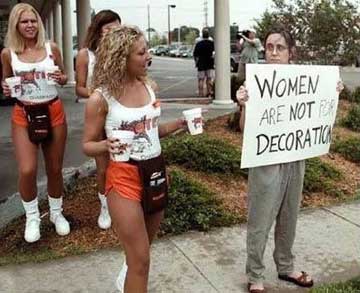
Whichever candidate succeeds this November, there will be a discernible effect in art. The last eight years have seen a resurgence of politically motivated art comparable to that produced during and after the Vietnam War. Characterizing the nature of art made now is, of course, a quixotic and thankless task. Contemporary art is far too multifarious and globally produced, experienced, and consumed to be bracketed into an “ism.” However, an art born of outrage revitalizing art’s shock tactics has emerged within the last few years, and may be seeing its twilight in the run up to a new administration.
Political outrage can blast the subtlety out of artmaking, and not all attempts to articulate it have been successful. Too often, real events throw artists’ discontent into stark relief. Thomas Hirschhorn’s Superficial Engagement at Barbara Gladstone in 2005, nail-studded, gnarly, and startling, looked mute and minor in relation to the Abu Ghraib revelations. A new show of work by veteran minimalist and performance artist Robert Morris at Spruth Magers in London has a pre-emptively archaic look to it: all inverted American flags, big black eagles, and screaming skulls in relief: theatrical, even camp in its outrage.
However, some works have addressed contemporary history with a lucidity and thoughtfulness that has asserted the importance of art as a forum for non-mainstream discussion. Mark Wallinger’s State Britain installation at Tate Britain was a rare example of a poised and poetic response to the curtailing of civil liberties that have taken place during the Iraq war, and is one of a number of more oblique responses to contemporary events that drag the discussion into the realm of art without compromising their efficacy as works of art (Alfredo Jaar‘s and An-My Lê’s works operate on similar levels). And Maypole (Take No Prisoners) (2007), by fellow Protest artist Nancy Spero, might be this generation’s Guernica: a howl of pain and anger distilled into a direct visual language that feeds into a historical continuum of the human cost of war—the visual articulation of horrified disbelief. Graphically simple paintings on paper of human heads–screeching, wailing, vomiting–radiate suspended from blood-red threads around a maypole, conflating historical circularity (the pole itself recalls the grotesque folk ritual dramatised in The Wicker Man), the theatrics of warfare, and raw human emotion.
The example of Spero is, in fact, instructive; the best political art has always been able to be comprehended in mass-media contexts. It’s significant that Goya’s Third of May and Gericault’s Raft of the Medusa–both produced on the cusp of the mass-distribution period that produced Guernica, a painting that replicates the striations of newsprint–retain their visual currency in political cartoons. Conversely, successful photographic icons of wartime have a pictorial quality that links them to the heritage of painted protest. Staged propaganda photographs from the American Civil War and photographs of atrocities from Abu Ghraib share a compositional quality that taps into a subconscious compositional sympathy (Art21 guest blogger Emily Liebert has written succinctly and fascinatingly on the role of photography in wartime here).
The revival of protest in painting has re-engaged the connection between painted mark and emotional intensity muffled by the generation of post-Richter distanced photorealists. Increasing mistrust of mainstream media coverage and the euphemistic language of contemporary conflict may turn out to be art’s gain; we may return to it as the basic language of human understanding and communication. Whether or not that continues to be the case will, in part, depend upon what takes place in six weeks’ time.



